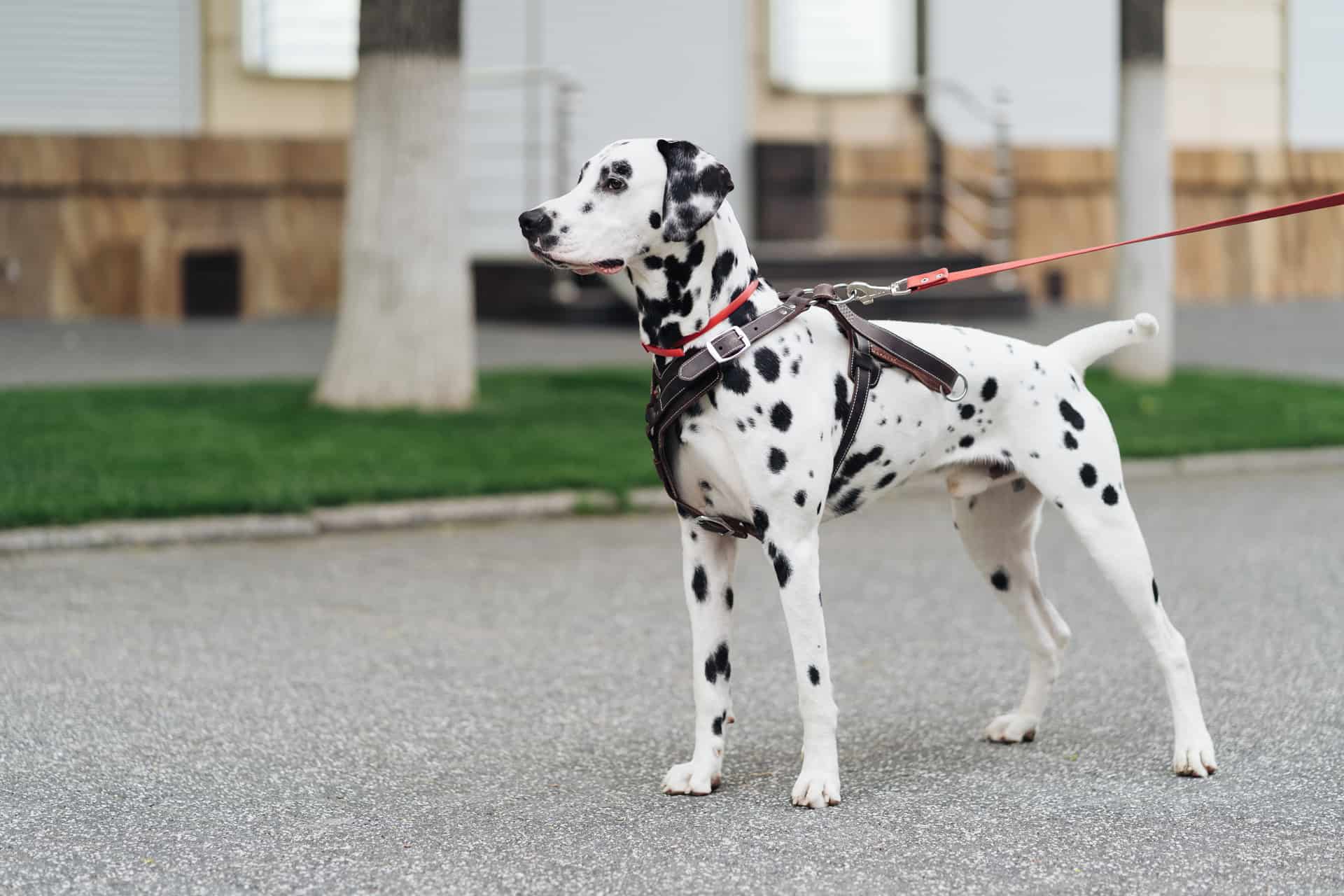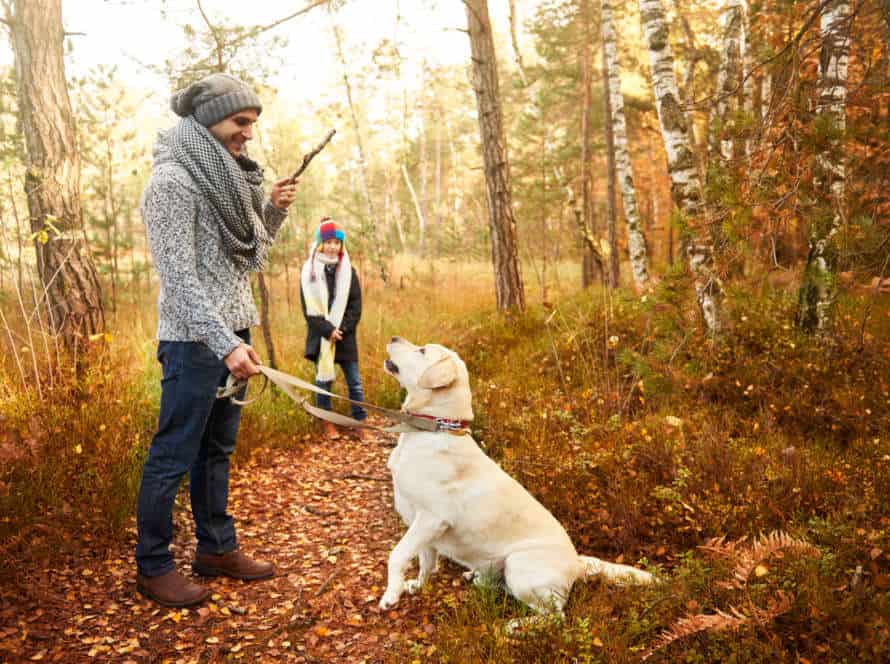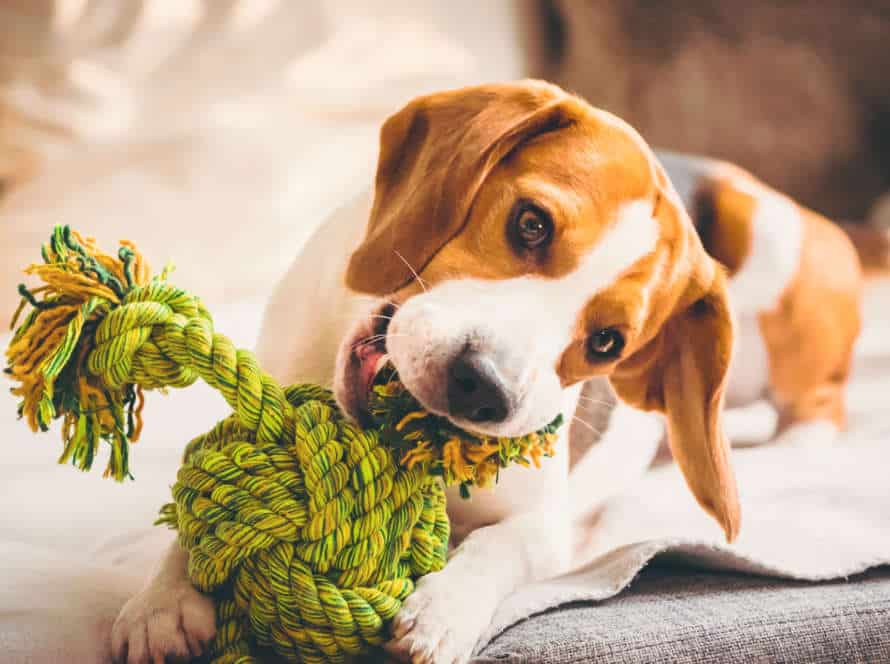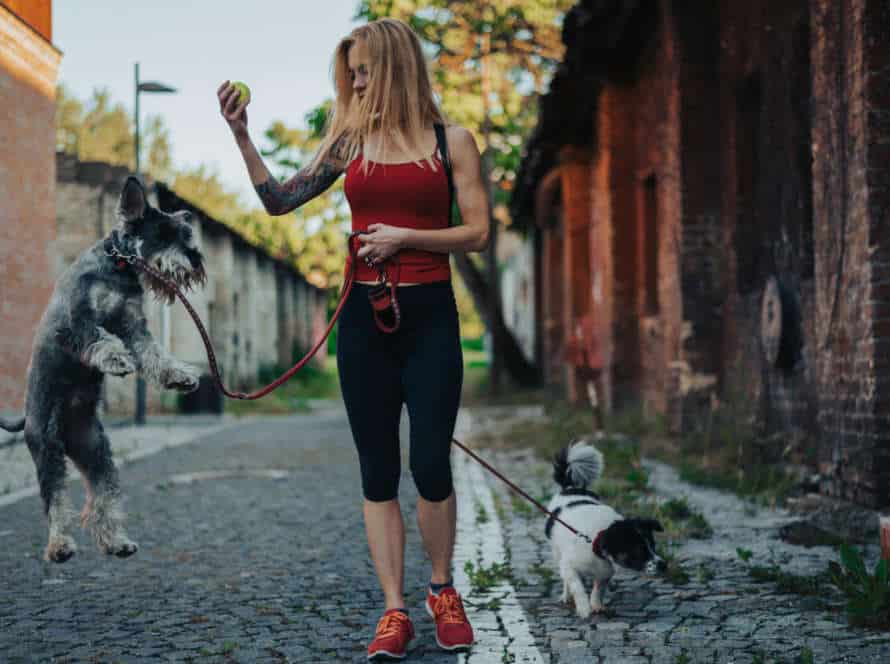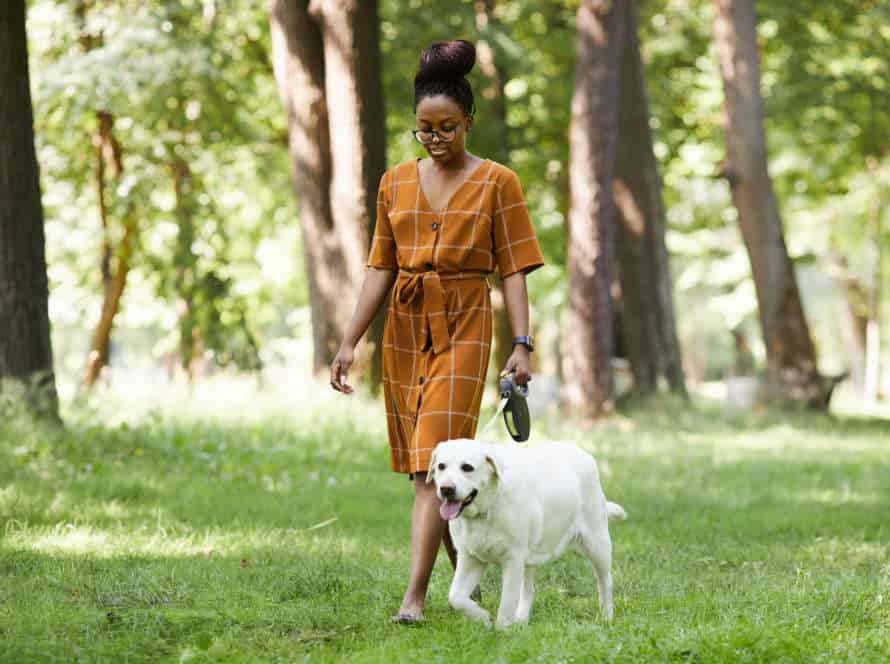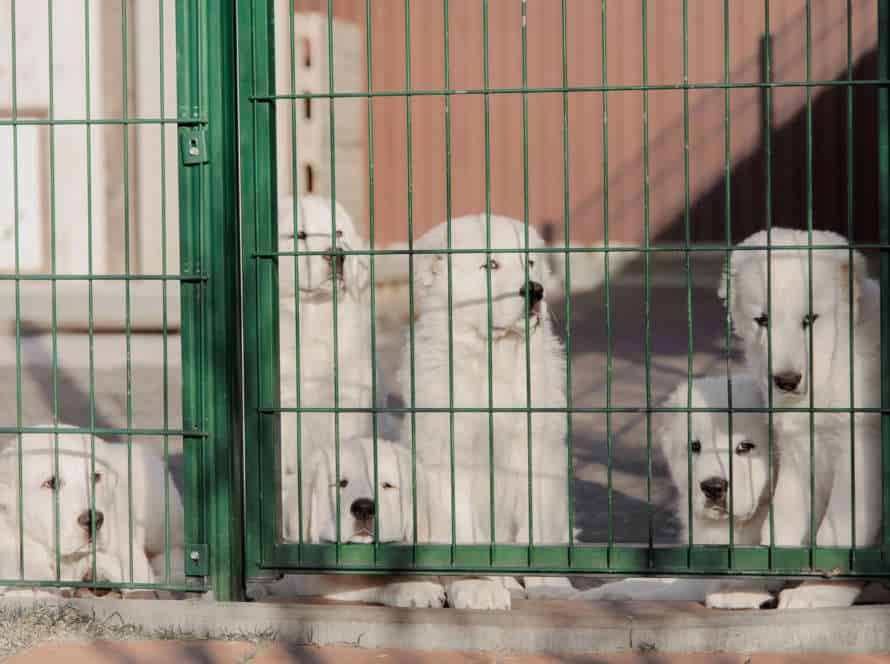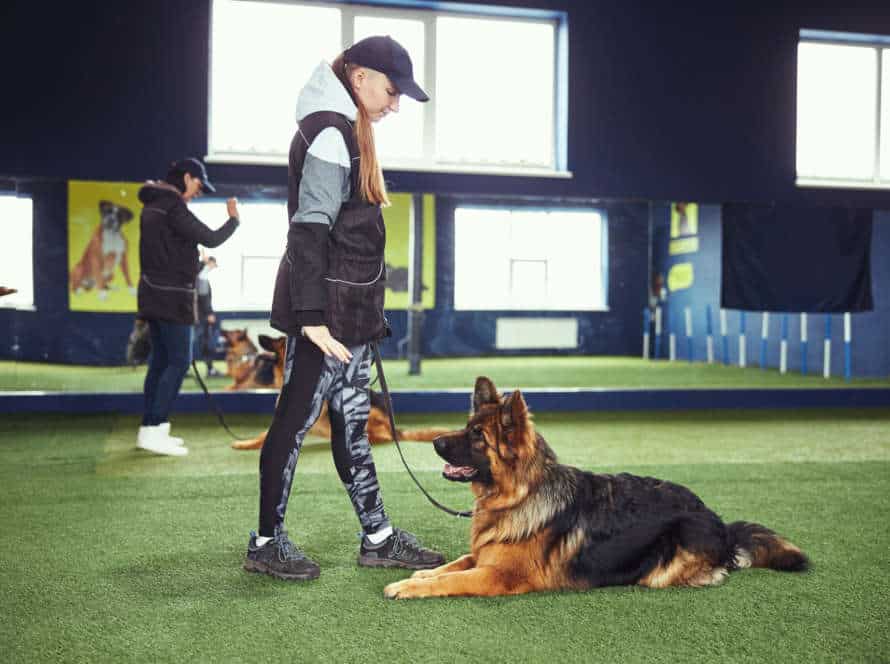The Importance of Ongoing Training for Leash Reactive Dogs
Training is essential for leash reactive dogs. It helps them overcome their fear and anxiety. This gives them more confidence, security and better social skills. It also creates a strong bond with their owners.
It’s important to have a qualified trainer or behaviorist to make a personal training plan for the dog’s needs. With patience, consistency and training, leash reactive dogs can have more enjoyable walks and a better life.
Understanding Leash Reactivity
Leash reactivity is a frequent canine conduct. It can come out in multiple forms, such as barking, snarling, lunging, or even biting. It’s an anxiety-based response to other dogs and/or people. It could be from past experiences, genetic makeup, or both.
Knowing leash reactivity is the initial step to assist your dog in managing their triggers, and forming a calmer, more pleasant atmosphere for them.
Defining Leash Reactivity
Leash reactivity is a common behavior in dogs. They become aggressive or overly excited when on a leash. This can be caused by other dogs, people, or unfamiliar things. It’s important to understand the leash reactivity, as it can be dangerous.
Training is key to help control the dog’s responses and make them more relaxed. Punishment shouldn’t be used, as this can make the behavior worse. Positive reinforcement methods should be used, to reward good behavior and promote calmness.
A certified dog trainer can assess the leash reactivity and create a plan specific to the dog. With consistency and patience, leash reactivity can be managed, keeping everyone safe.
Causes of Leash Reactivity
Leash reactivity is a common issue with dogs. To find a good solution, it’s important to understand the causes.
Common causes are:
- Lack of socialization. Dogs who haven’t been around people, animals, or new places can get scared or anxious when on a leash.
- Negative experiences. Dogs who’ve had bad things happen to them while on a leash, like getting attacked or hit by a car, can become aggressive or fearful.
- Frustration. Dogs who don’t get enough exercise, playtime, or exploration become restless or frustrated while on a leash, and may act out.
- Territory guarding. Dogs who think they need to protect their owners or territory while on a walk can become reactive to dogs or people they see as a threat.
By understanding the cause of your dog’s leash reactivity, you can work with a trainer to make a plan that addresses it. This will help your dog learn better behaviors.
Consequences of Leash Reactivity
Leash reactivity in dogs can have serious consequences. Dogs may become anxious, stressed, or fearful when they’re exposed to triggers, like other dogs, bikes, or people. This can lead to aggressive or disruptive behavior while on a leash.
Consequences of leash reactivity include:
- Aggressive behavior that comes on suddenly
- Injury to the dog or handler
- Difficulty walking and managing the dog
- Reduced quality of life for both dog and handler
- Fear and anxiety in the dog
It’s vital for owners to understand leash reactivity and recognize it in their own dogs. Professional help and positive training can make a big, lasting difference in your dog’s behavior and wellbeing.
The Benefits of Ongoing Training
Training is crucial for leash reactive dogs. It helps them adjust to novel environments. Teaching and reinforcing commands gives the pup a platform to comprehend the world. Plus, ongoing training can reduce stress and anxiety levels in leash reactive dogs, leading to a better life for both your pup and you! Let’s look into the advantages of frequent training for leash reactive dogs.
Reinforcement of Positive Behaviors
Reinforcing positive behaviors is key for leash reactive dogs’ ongoing training. Positive reinforcement will reinforce good behavior and help your dog develop a positive connection with whatever is causing the reactivity.
Here are some benefits of training leash reactive dogs:
- Builds trust and respect between you and your pooch: Consistently reinforcing exercises and commands can help your pup feel more secure and confident with you as their caregiver.
- Enhances the bond between you and your pup: By rewarding positive behavior regularly, your dog will link positive experiences with you.
- Assists in reducing reactivity: Utilizing positive reinforcement training can help to reduce leash reactivity and enhance your dog’s overall behavior.
Pro tip: Be patient and consistent in your training efforts. Reward positive behavior often. Eventually, your pup will associate positive experiences with their reactivity trigger, leading to a more relaxed and better-behaved dog.
Reduction in Reactive Behavior
Continuous training can really cut back on leash reactive behavior in dogs. Reactive behavior is usually caused by fear, worry, or irritation. It can appear as barking, growling, lunging, or snapping. Training leash reactive dogs offers these main advantages:
- Increases self-assurance: Training can assist dogs to be more secure and relaxed in different or difficult situations, cutting down on reactive behavior.
- Offers physical and mental stimulation: Giving regular mental and physical exercise can help lessen a dog’s frustration and anxiety, minimizing reactive behavior.
- Develops a positive connection: Training can help create a positive bond between the presence of other dogs or people and positive rewards, diminishing reactive behavior.
Always remember, train using positive reinforcement techniques and with the guidance of a professional dog trainer.
Improved Safety for Dog and Owner
Training is a must for safety of both pups and humans – especially with leash-reactive dogs. It brings lots of advantages, like:
- Improving socialization abilities. Training helps dogs learn how to act around other dogs and reduces aggressive acts.
- Enhancing obedience. Through training, dogs learn good behaviour and respond to commands, making it easier for their owners to control them in risky scenarios.
- Improving communication. Training helps dogs communicate with their owners and understand cues better.
- More exercise options. An obedient pup gives owners more confidence to take them to parks, trails, or public places.
In conclusion, ongoing training helps to avoid bad habits, encourages secure interaction between pets and owners, and reinforces their bond.
Training Techniques and Tools
Training leash reactive dogs needs reinforcement over time for a lasting effect. To reach this goal, understand the various training techniques and tools. This will help you pick the right approach and method for your unique situation.
Let us learn more about the training techniques and tools to fathom their application.
Positive Reinforcement Training
Positive reinforcement training is a great technique for dogs. It rewards desired behaviors, instead of punishing bad ones. Especially useful for leash-reactive dogs. Some tools to help: treats, clickers, toys and a 6-foot leash. Regular training is essential. It can reduce reactivity, help obedience and socialization. Pro tip: Start in a quiet, low-stress environment. Then, increase challenge as the dog gets more comfortable.
Counter-Conditioning Techniques
Counter-conditioning is a technique that can help reduce leash reactivity in dogs. It works by swapping the dog’s negative feeling for a trigger with a positive one.
Here are some counter-conditioning tips:
- Give treats before the trigger appears.
- Encourage your pup to focus on you with rewards.
- Increase the distance between the dog and trigger.
- Slowly reduce the gap until the dog is relaxed.
Consistent practice of these techniques can make your pup’s life happier and less stressful.
Use of Appropriate Training Tools (i.e. front-clip harnesses)
Using the right training tools, like front-clip harnesses, can make a big change in training leash-reactive dogs.
Front-clip harnesses help to focus the dog’s attention away from distractions and onto the handler. They also stop the dog from pulling or lunging, making them easier to manage and reducing stress.
Used with positive reinforcement training, front-clip harnesses can teach leash-reactive dogs to walk calmly on a leash and feel more secure.
However, using training tools is not a complete solution for leash-reactivity issues. With ongoing training, patience, and consistency, leash-reactive dogs can learn to overcome their fears and become great pets.
Finding a Qualified Trainer
Leash-reactive dogs need continual training to beat this behavior. It’s essential to discover a qualified and veteran trainer who can give all-inclusive training for leash reactivity. This part will talk about the significance of finding a proficient trainer and what to consider when picking a trainer.
Importance of Working with a Certified Professional
It is essential to work with a certified pro when finding a suitable trainer for your leash-reactant pup. This guarantees that your pup gets the best training and attention.
Credentialed professionals have the understanding, know-how and gadgets to identify your pup’s conduct and create a training plan to tackle the root of reactivity.
They provide personalised one-on-one sessions, regular check-ins and follow-up appointments to monitor the training’s progress. Moreover, they keep abreast of the latest training techniques and studies, guaranteeing humane and safe training plans for your pup.
Working with a certified pro gives you assurance that your pup is in good hands and getting the top-notch training.
Pro Tip: Before selecting a trainer for your pup, do your research, ask for credentials and references to make sure they are experienced in handling leash-reactant dogs.
Questions to Ask a Potential Trainer
Searching for a trainer for your leash reactive pup? Ask the right questions to make sure the trainer is qualified! Here are some to ask:
- What’s your background and experience with doggy training?
- References from past clients with leash reactive dogs?
- Positive reinforcement techniques used?
- How do you customize the training for my pup?
- Rate of success with treating leash reactivity?
- What’s your approach if progress stops or new problems arise?
By asking these questions, you can make an educated decision and find a qualified trainer to help your pup overcome their leash reactivity.
The Benefits of Personalized Training Plans
Personalized training plans have many benefits for pet owners with leash reactive dogs. These range from changing behavior to improving physical and mental health.
A customized plan allows the trainer to evaluate the dog’s behavior and health. It provides exercises and techniques to fix bad habits like biting, lunging, and aggression.
It also takes into account the breed, temperament, and activity level of your dog. This creates a routine that meets your pup’s needs and strengthens the bond with you. It reduces the chance of injury, fights anxiety, and keeps your dog active and healthy.
When looking for a qualified trainer, find one who uses positive reinforcement with behavior changes. Certified trainers can give ongoing support to keep the progress you made during the sessions.
Pro Tip: Research and talk to trainers before investing in a personalized plan. Make sure you feel comfortable with the trainer and their assessment of your dog’s needs.
Consistency and Commitment
Consistency and commitment are must-haves for successful leash reactive dog training. It can be a long journey, but with perseverance, progress is achievable. Let’s discuss why ongoing training is key and how to make it work for your pup.
Importance of Consistency in Training
Training a leash reactive dog can be hard. Consistency is key! Here’s why:
- Consistent training builds good habits.
- It increases success rate.
- Prevents confusion for the pup.
- Builds trust between trainer & dog.
To ensure success, the trainer must commit to a regular training schedule and use the same commands and methods.
Importance of Continued Training Beyond Initial Program
Continuous training is key for leash-reactive dogs. It sets them up for success in social situations. Experienced trainers often recommend it. Consistent training gives the chance to refine the dog’s behavior and strengthen earlier teachings. This makes it more likely the pup will keep up good conduct in new challenges and environments.
Reactive dogs need continuous training to learn impulse control and new ways of coping. With ongoing help from trainers, they can improve their behavior and increase their chances of success.
Plus, additional training helps the owner follow their dog’s progress and stay dedicated to long-term behavioral change.
In short, continued training beyond initial programs is essential for leash-reactive dogs. It reinforces prior teachings and develops new coping mechanisms, providing an opportunity for the pup to show good behavior in social situations.
Importance of Ongoing Practice at Home
Practicing at home is essential for improving leash-reactive dogs’ behavior. Consistent commitment is vital for successful, long-term training.
It enables the pup to understand expectations and sustains positive behavior. It also establishes a routine, making them feel secure and reducing fear.
Here are tips for home-training:
- Work with your pet in a low-distraction area, like the garden or a peaceful room.
- Give consistent cues and rewards for good conduct.
- Gently raise distractions and commands’ difficulty.
- Stay patient and committed, even if progress is slow.
- Be aware that missing training can reverse all progress.
Pro Tip: Engaging a professional dog trainer gives extra support and guidance to help the pup manage leash reactivity.
Frequently Asked Questions
1. Why is ongoing training important for leash reactive dogs?
Leash reactive dogs need consistent training to change their behavior and reduce their reactivity. Without ongoing training, their behavior can escalate and become more difficult to manage over time.
2. What kind of training is best for leash reactive dogs?
Positive reinforcement training, including clicker training and treat training, is often the most effective form of training for leash reactive dogs. This type of training focuses on rewarding good behavior rather than punishing bad behavior.
3. How often should I train my leash reactive dog?
The frequency of training will depend on your dog’s specific needs and behavior. However, it is generally recommended to train at least a few times a week for ongoing reinforcement of good behavior.
4. Can training completely eliminate leash reactivity in dogs?
While ongoing training can significantly reduce leash reactivity, it’s important to note that some dogs may always have a certain level of reactivity. However, training can make it much more manageable and help improve your dog’s behavior overall.
5. Should I work with a professional dog trainer for leash reactivity?
Consulting with a professional dog trainer can be extremely helpful when dealing with leash reactivity in dogs. They can offer personalized advice and provide customized training techniques that are specific to your dog’s needs.
6. What are some other ways to help manage a leash reactive dog?
In addition to ongoing training, there are other ways to help manage leash reactive dogs. These include using calming pheromone sprays or diffusers, avoiding triggering stimuli, and providing plenty of exercise and mental stimulation.

